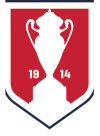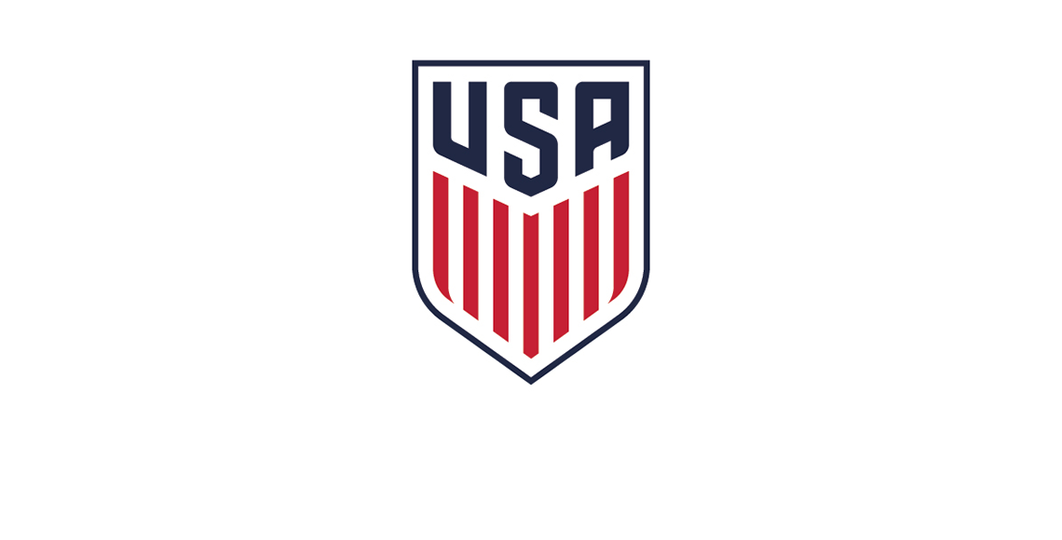As the national governing body for soccer, U.S. Soccer’s highest priority is participant safety at all levels of the game. In line with that commitment, U.S. Soccer has been taking comprehensive action to enact meaningful change across the game and make soccer safer for everyone. Updates on U.S. Soccer’s progress on these efforts over the last few months are outlined below.
Advocating for SafeSport Reform
The U.S. Center for SafeSport (“SafeSport”) is an organization created by Congress in 2018 to address the problems of sexual abuse of minors and athletes in Olympic sports in the United States. SafeSport is the formal mechanism that U.S. Soccer and other national governing bodies (NGBs) are required by law to use to keep bad actors out of sport. However, former Deputy Attorney General Sally Yates concluded in her independent investigative report that there are some troubling limitations within SafeSport’s processes that have had a significant negative impact on U.S. Soccer’s ability to protect athletes and other participants most effectively.
Over the past several months, U.S. Soccer has been working directly with members of Congress to recommend specific changes to SafeSport that can be put into law to improve SafeSport’s processes and better protect athletes of all ages. The reforms are aimed at addressing:
- Increased information sharing: SafeSport does not share information about the allegations it receives, its investigative process, nor any findings it makes, leaving NGBs like U.S. Soccer unable to institute appropriate safety measures, and as a result, leaving athletes vulnerable to future abuse.
- Ability to protect athletes: Upon learning of allegations of sexual abuse or misconduct, NGBs are not permitted to take necessary measures to protect the safety of their participants if SafeSport is already exercising jurisdiction.
-
Clear resolution of cases: Administrative closure – whereby SafeSport closes a matter without any findings and prohibits any sharing of information about the allegations or further investigation by others – allows bad actors with serious allegations of misconduct against them back into the sport where they can continue their abusive behavior.
- A victim-centric appeals process: SafeSport’s appeals process effectively gives individuals who are found guilty of abuse the right to an entirely new fact-finding process. This unnecessarily forces victims of abuse who were brave enough to participate in an investigation to go through the process all over again, and if they choose not to do so, SafeSport forces NGBs to let bad actors back into their sport.
In July, more than 100 current and former athletes across soccer represented by the USSF Athletes Council signed a letter to Congress urging them to take action on U.S. Soccer’s recommendations to reform SafeSport. The American Youth Soccer Organization (AYSO) has supported U.S. Soccer in these efforts and called on Congress to make the recommended improvements the Athletes Council put forth in their letter. Following the Athletes Council letter, U.S. Soccer Federation’s Youth Council, which is responsible for over 3.5 million youth players, coaches, administrators and volunteers, sent a letter to the United States Senate and U.S. House of Representatives sharing a number of issues its members have experienced with SafeSport – which were in line with the issues U.S. Soccer has faced – in an effort to get Congress to take action.
In September, US Youth Soccer (USYS), on behalf of its 54 state membership associations, sent a letter to Senators Maria Cantwell and Ted Cruz, chair and ranking members of the Senate Committee of Commerce, Science & Transportation, echoing the call to action from the Athletes Council and calling on Congress to pass legislation to implement the recommendations from U.S. Soccer to improve SafeSport’s process. USYS also sent a separate letter to every member of the U.S. House of Representatives and United States Senate calling on them to act. USYS State Associations across the country have also sent letters to their respective members of Congress asking them to act quickly and prioritize legislation that enacts these reforms to keep youth athletes safe.
U.S. Soccer also helped convene a strong coalition of NGBs, as well as a leading victim advocacy group, The Army of Survivors, to join together to help Congress understand the critical importance of these reforms. U.S. Soccer is committed to working together with its membership, the rest of the NGB community and elected officials to push forward with legislation to ensure that SafeSport’s processes and procedures actually keep athletes of all ages safe from abuse.
Office of Participant Safety
In late 2022, U.S. Soccer established a new Office of Participant Safety, taking a two-pronged approach to participant safety efforts: 1) prevention, education and training, and 2) reporting and response, inclusive of U.S. Soccer’s conduct policies and reporting mechanisms. The Office is led by Alison Kocoras, Vice President of Safeguarding – Response and Welfare, Renee Towles Vice President of Safeguarding – Prevention and Education and Mana Shim, Chair of U.S. Soccer’s Participant Safety Taskforce.
Safe Soccer Clearance Program
Over the last several months, U.S. Soccer staff and members of the Participant Safety Taskforce have been working on the development of a first-of-its-kind Safe Soccer Clearance program, redefining the processes and criteria used to determine participation eligibility in soccer. The Safe Soccer program will standardize safeguarding through a thorough, continuous vetting system that will prohibit bad actors from participating in soccer.
At the heart of the program is a departure from the historical red-light system that removes bad actors after an incident of misconduct, to a green-light system that ensures participants are cleared and have proper training before participating. This program will allow U.S. Soccer and member organizations to work together to keep bad actors out of the game and will create a national minimum standard of safeguarding that is of benefit to all U.S. Soccer members.
U.S. Soccer is now working on a plan for seamlessly implementing the program across its membership, led by U.S. Soccer’s newly appointed Chief Soccer Growth Officer, Shari Summers, and Chief Product Officer, Abe Geiger, who is developing the technology platform for the program.
Revisions to Pro League Standards
At U.S. Soccer’s Annual General Meeting in March 2023, U.S. Soccer adopted amendments mandating additional safeguarding protection into its Pro League Standards, which govern all professional leagues affiliated with U.S. Soccer, including Major League Soccer (MLS), the National Independent Soccer Association (NISA), the National Women’s Soccer League (NWSL), the North American Soccer League (NASL) and the United Soccer League (USL). The updates to the Pro League Standards were developed in collaboration with the professional leagues and mandate additional safeguarding protections including but not limited to:
- Requiring that each professional league and team has a player safety officer responsible for ensuring compliance with player safety standards;
- Requiring professional leagues to provide annual safeguarding reports to U.S. Soccer;
- Ensuring all professional leagues employ dedicated human relations professionals;
- Requiring professional leagues to train coaches and staff on topics such as verbal and emotional abuse, sexual misconduct, harassment and retaliation;
- Requiring professional leagues to conduct annual player feedback surveys;
- Prohibiting the use of non-disclosure and non-disparagement agreements used to shield information about abuse allegations; and
- Requiring all professional leagues to report any allegations of misconduct or issues of abuse to the Federation in a timely manner.
Collaboration with NWSL on Safeguarding
U.S. Soccer collaborated with the NWSL to support the implementation of many safeguarding changes ahead of the 2023 NWSL season, including the development of the NWSL’s 2023 training program and list of required questions for inclusion on their player feedback survey.
Annual Safeguarding Reports
U.S. Soccer has committed to sharing annual safeguarding reports with the public. As U.S. Soccer’s Office of Participant Safety continues to roll out new materials and programs, key metrics will be reported on such as number of participants who have been Safe Soccer Cleared, average report response time and effectiveness of new education modules.
Publication of SafeSport’s Centralized Disciplinary Database
U.S. Soccer published a live link to the soccer records from SafeSport’s Centralized Disciplinary Databaseto publicly identify individuals in soccer who are currently subject to SafeSport discipline, suspended or banned. The SafeSport status of any participant can be searched on U.S. Soccer’s website in real time by anyone involved in the sport.
Model Policies
U.S. Soccer has required all its members to implement and enforce the Model Minor Athlete Abuse Prevention Policy (MAAPP) and Model Prohibited Conduct Policy for all participants within their organizations. The MAAPP limits one-on-one adult/minor interactions and sets standards for training and sport settings that prevent abuse and misconduct. The Model Prohibited Conduct Policy sets clear standards for harassment, abuse, and other misconduct.
Creation and Distribution of Safeguarding Resources for Membership
U.S. Soccer has developed model Codes of Conduct for its member organizations outlining the appropriate behavior for coaches, parents, players, referees and team staff. The Codes of Conduct are available to all members, and member organizations may use these codes exactly as they are, or they may build off them as they see fit for their specific organization, setting the expectation of what each group can and cannot do in their soccer environments.
In U.S. Soccer’s discussions with membership, one recurring theme has been the lack of definition around abuse and how the ‘grey’ areas make it very difficult for organizations to determine what the proper next steps or response should be. In an effort to help navigate that challenge, U.S. Soccer has developed Severity of Misconduct Matrixes for verbal, physical, sexual, and other forms of misconduct. These matrixes are intended to be used as a guide and framework for categorizing misconduct and determining next steps, reporting requirements and appropriate discipline. Like the Codes of Conduct, the Severity of Misconduct Matrixes are available on the Participant Safety Hub and have been distributed to all membership.
U.S. Soccer is actively creating a Member Manual for the Resolution of Prohibited Conduct Reports. This resource will be shared on the Participant Safety Hub, and includes guidance on report intake, determining jurisdiction, responding to violations, and providing mentorship/coaching for when an individual falls short of expectations.
U.S. Soccer created the Participant Safety Hub on the U.S. Soccer website, which houses a number of participant safety resources, including U.S. Soccer’s Code of Conduct and reporting hotline information. U.S. Soccer continuously updates the Participant Safety Hub with the latest safeguarding resources.
Dedicated Yates Implementation Board Committee and Participant Safety Taskforce
In 2022, U.S. Soccer established the Yates Implementation Committee of the Board of Directors, chaired by former U.S. Women’s National Team player Danielle Slaton alongside Vice Chair US Club Soccer CEO Mike Cullina. The Participant Safety Taskforce is chaired by Mana Shim. Both the Committee and Taskforce are focused on ensuring U.S. Soccer and its members are at the forefront of safeguarding and are continuing to urgently work together on the rollout the Safe Soccer Clearance program and other measures aimed at creating safe playing environments for everyone involved in our sport.
U.S. Soccer is committed to ongoing transparency and will keep players, U.S. Soccer membership and the public regularly updated on the progress of its ongoing participant safety efforts. Additional information can be found in the Participant Safety Hub on U.S. Soccer’s website.







